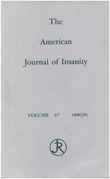The phototherapy light visor: more to it than meets the eye
Abstract
OBJECTIVE: The purpose of the study was to ascertain whether phototherapy light visors provide an effective treatment for seasonal affective disorder. Previous studies have demonstrated a moderate response rate but have failed to find any difference in efficacy between light intensities. METHOD: Subjects were randomly assigned to receive, over a 2-week treatment period, 30 minutes of morning phototherapy with a light visor that emitted either a dim (30-lux) red light or a bright (600-lux) white light. Raters were blind to treatment, and patients were unaware of the alternatives. Response was assessed by using the structured 21-item Hamilton Depression Rating Scale, with an eight-item addendum for atypical depressive symptoms. Fifty-seven patients were enrolled across two sites. RESULTS: Patients assigned to the different visors had similar baseline depression scores and similar expectations of outcome. Hamilton depression scale scores declined by 34.6% for subjects given bright white light and by 40.9% for subjects given dim red light. Scores for atypical depressive symptoms fell by 44.1% for patients assigned the bright white light visors and by 49.0% for patients assigned the dim red light visors. Altogether, 39.3% of the patients who received red light and 41.4% of the patients who received bright white light showed a full clinical response. CONCLUSIONS: There were no significant differences in therapeutic response between patients who were treated with red or white light. The results of this study suggest that the phototherapy light visor may function as an elaborate placebo. Alternative explanations, however, are considered.
Access content
To read the fulltext, please use one of the options below to sign in or purchase access.- Personal login
- Institutional Login
- Sign in via OpenAthens
- Register for access
-
Please login/register if you wish to pair your device and check access availability.
Not a subscriber?
PsychiatryOnline subscription options offer access to the DSM-5 library, books, journals, CME, and patient resources. This all-in-one virtual library provides psychiatrists and mental health professionals with key resources for diagnosis, treatment, research, and professional development.
Need more help? PsychiatryOnline Customer Service may be reached by emailing [email protected] or by calling 800-368-5777 (in the U.S.) or 703-907-7322 (outside the U.S.).



